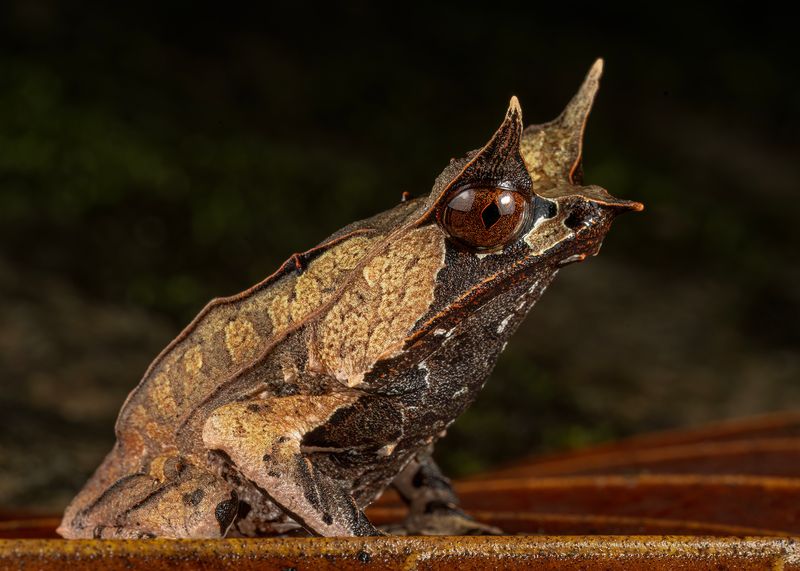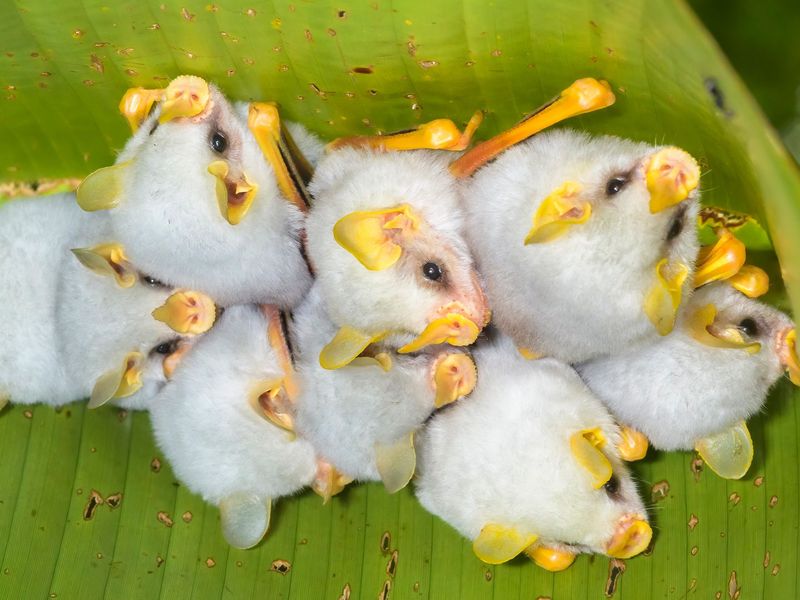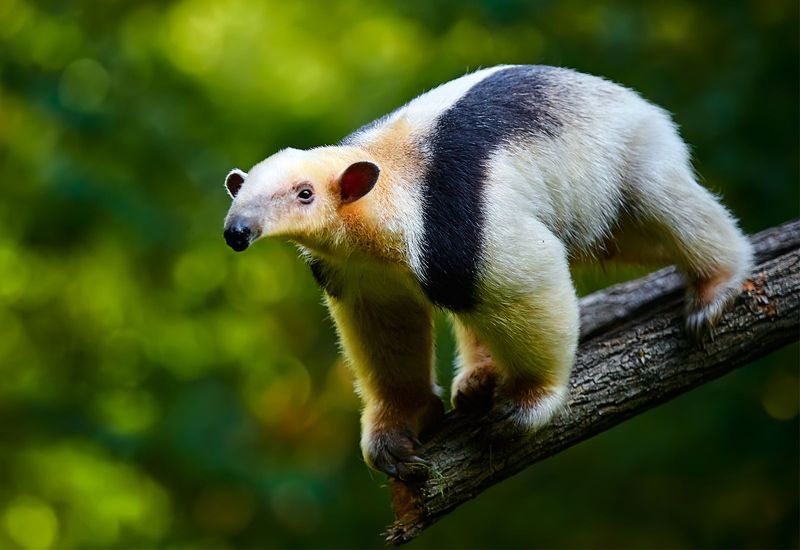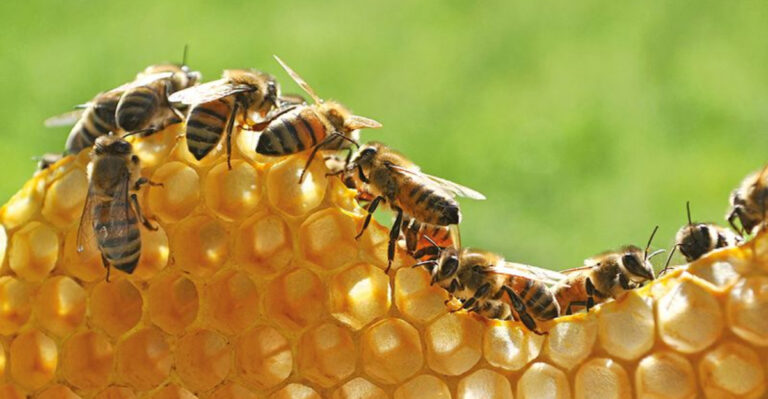14 Big-Nosed Animals And The Unexpected Reasons They Need Them

Ever wondered why some animals have such enormous snouts? Those super-sized schnozzes aren’t just for show! In the animal kingdom, a big nose can be the key to survival.
From finding food to attracting mates, these remarkable nasal adaptations serve crucial purposes that might surprise you.
1. Nature’s Swimming Champion With A Built-In Snorkel

Tapirs look like someone mashed together an elephant and a pig, then added a mini-trunk for fun. Their flexible snout acts like a built-in snorkel when swimming and doubles as a fifth limb for grabbing tasty leaves.
These jungle-dwelling oddballs can pluck fruit from branches and even breathe while almost completely submerged underwater. Talk about a nose of many talents!
2. Desert Survival Expert With Heat-Resistant Nostrils

Dromedary camels sport those iconic humped silhouettes, but their bizarre nostrils deserve the spotlight too. These desert specialists can completely close their nostrils during sandstorms – like having built-in storm shutters!
Their nasal passages also recapture moisture from each exhaled breath, recycling precious water vapor that would otherwise be lost. A literal lifesaver in their harsh desert home.
3. The Underwater Sniffer With A Meter-Long Nose

Imagine having a nose so sensitive you could smell a teaspoon of sugar in an Olympic-sized swimming pool. That’s the elephant seal’s reality! Their massive schnozzes help males battle for beach territory during mating season.
The bigger the nose, the louder their roars echo across the shoreline. These blubbery beachgoers can even collapse their nostrils underwater, preventing saltwater from rushing in during deep dives.
4. The Pig With A Living Metal Detector

Equipped with a super-powered snout, babirusas aren’t your average pigs. Their fleshy nose discs contain thousands of scent receptors that can detect roots and tubers buried deep underground.
Unlike regular pigs, male babirusas grow tusks that actually pierce through their snouts and curl backward toward their foreheads! These bizarre nose-piercing tusks serve as weapons during territorial disputes with rival males.
5. Star-Nosed Wonder With Supersonic Touch

Looking like it has a tiny pink starfish stuck to its face, the star-nosed mole’s schnoz is actually a marvel of evolution. Those 22 fleshy tentacles contain over 25,000 sensory receptors crammed into an area smaller than your fingertip.
This nose works faster than your eyes can blink, touching up to 12 objects per second! Underground in complete darkness, this living touch-sensor helps them find worms faster than any other mammal on Earth.
6. The Leaf-Mimic With A Snake-Like Snout

Resembling a fallen leaf with legs, the long-nosed horned frog’s pointy schnoz serves as the perfect disguise. Its elongated nose extends the leaf-like appearance of its body, helping it vanish among forest debris.
When hungry bugs wander too close, this master of camouflage transforms from innocent leaf to lightning-fast predator. The unusual nose even has special sensors to detect the tiniest movements of potential meals nearby.
7. The Sword-Faced Fish Hunter

Sawfish look like someone attached a hedge trimmer to a shark’s face! Their bizarre tooth-lined rostrum (that’s science-speak for their saw-nose) works like an underwater metal detector, sensing the electrical fields produced by fish hiding in murky water.
With a quick sideways slash, they stun prey and then scoop up the disoriented fish. Their nose-swords can grow up to 5 feet long – imagine walking around with a ladder attached to your face!
8. The Nocturnal Gardener With A Leaf-Shaped Schnoz

Sporting what looks like a tiny leaf glued to its face, the Honduran white bat uses its unusual nose shape as the perfect camouflage. These tiny creatures create “tents” by nibbling specific patterns into large leaves, making green shelters.
Their leaf-shaped nose helps them blend perfectly with their DIY homes. Predators looking up simply see more leaves! These miniature architects even select leaves containing compounds that deter insect pests from their roosts.
9. The Vacuum-Nosed Anteater Of The Treetops

Silky anteaters rock a nose that’s basically a living straw. Their tubular snouts contain no teeth but house a tongue that can extend nearly twice their body length – imagine your tongue reaching your knees!
Their specialized snout creates powerful suction that helps them vacuum up thousands of ants daily. Even cooler? Their nose contains special membranes that filter out dirt and debris while they’re slurping up their six-legged snacks.
10. The Bubble-Blowing Nose Wizard

Male hooded seals take nose bling to extreme levels with their inflatable nasal sacs. When trying to impress the ladies, they blow up a bright red balloon from their left nostril that can grow bigger than their head!
This bizarre display looks like they’re blowing strawberry bubblegum bubbles underwater. The brighter and bigger the nasal balloon, the more attractive they appear to potential mates. Talk about putting your best nose forward!
11. The Rainforest Fruit Detector With Mega-Nostrils

Imagine smelling a ripe fruit from over a mile away! That’s daily life for the spectacled bear with its oversized olfactory system. Their extra-wide nose contains scent receptors that can detect specific fruit trees ripening in dense South American forests.
These bears navigate vast mountain ranges by following their super-sniffer. Their specialized nasal passages even filter mountain air efficiently at high altitudes where oxygen is scarce, helping them thrive where other bears couldn’t survive.
12. The Prehistoric-Looking Nose Warrior

Rhinoceros hornbills look like they flew straight out of the dinosaur age with that massive banana-shaped casque (fancy word for their hollow head ornament) sitting atop their beak. This bizarre structure works as a megaphone, amplifying their calls through dense rainforests.
The hollow horn-nose also serves as a temperature regulator. Blood vessels running through the casque release heat when they’re overheated – nature’s air conditioning system! Males with the most impressive casques attract the choosiest females.
13. The Night Hunter With Sound-Collecting Facial Dishes

Resembling a flying fox with satellite dishes for ears, the slit-faced bat’s bizarre nose structure works like acoustic radar. The complex folds around their nostrils direct their ultrasonic calls like a biological megaphone.
These specialized nose leaves help them pinpoint insects with millimeter precision in complete darkness. Their facial features are so sensitive they can detect the wing-beats of a mosquito from several feet away! Nature’s most sophisticated sound-targeting system wrapped in fur.
14. The Desert Wind-Catcher With Heat-Exchanger Nostrils

Fennec foxes flaunt ears bigger than their faces, but their specialized noses deserve equal attention. Those cute black nostrils contain intricate scroll-like structures that cool incoming air and recapture moisture from each breath.
This desert adaptation prevents precious water loss in their harsh Saharan home. Their sensitive nose can detect insect larvae moving underground, helping them find meals hidden beneath the sand. These pint-sized predators can even smell water sources from miles away!






